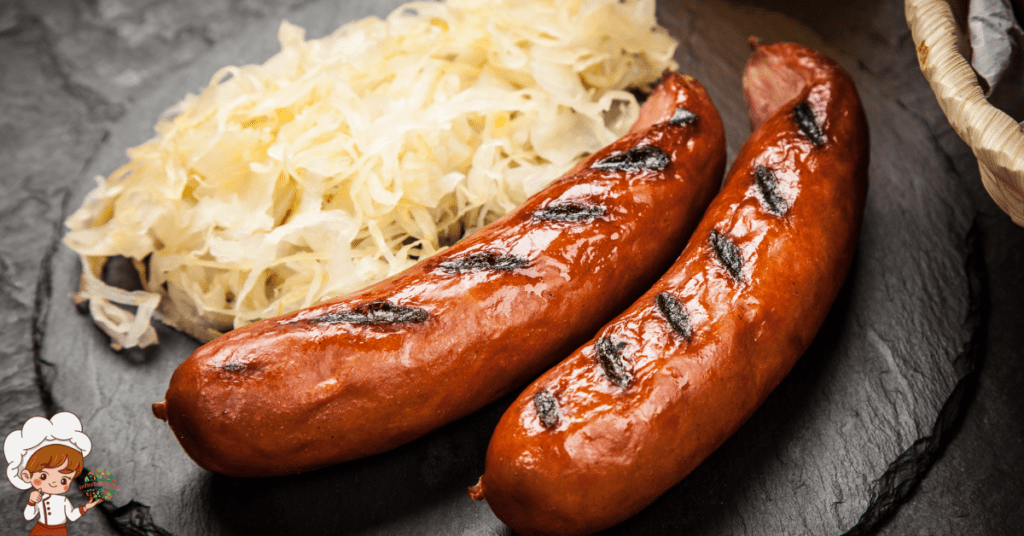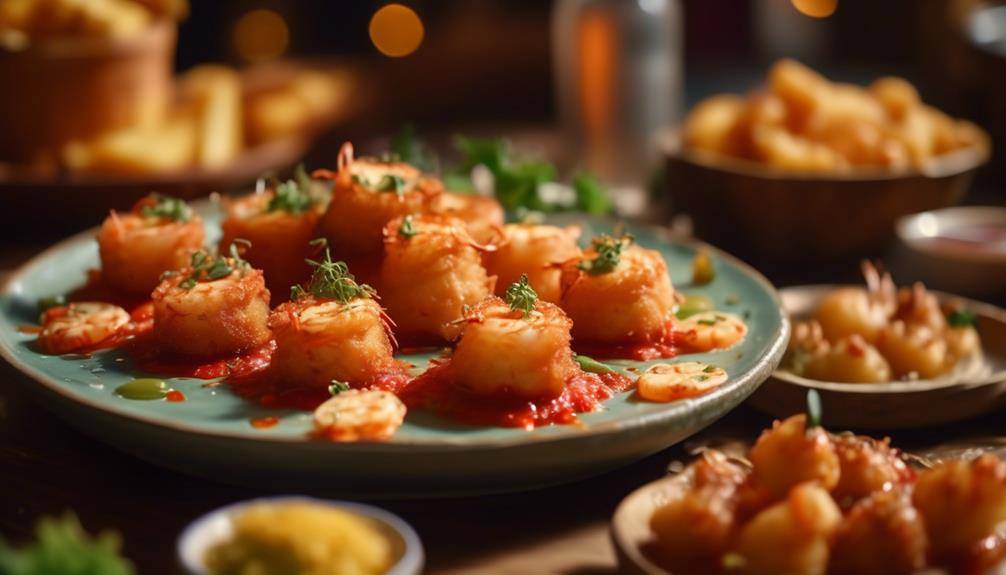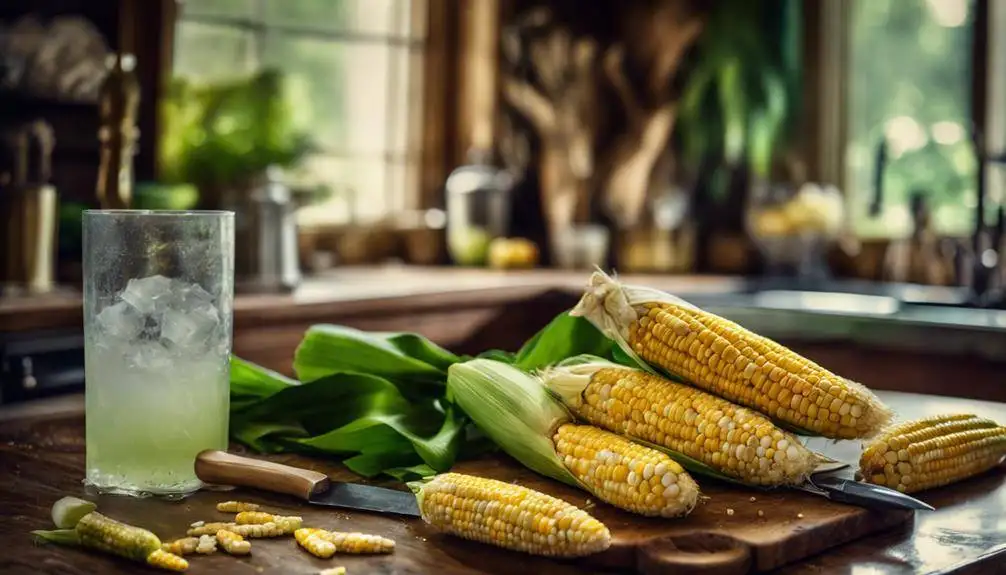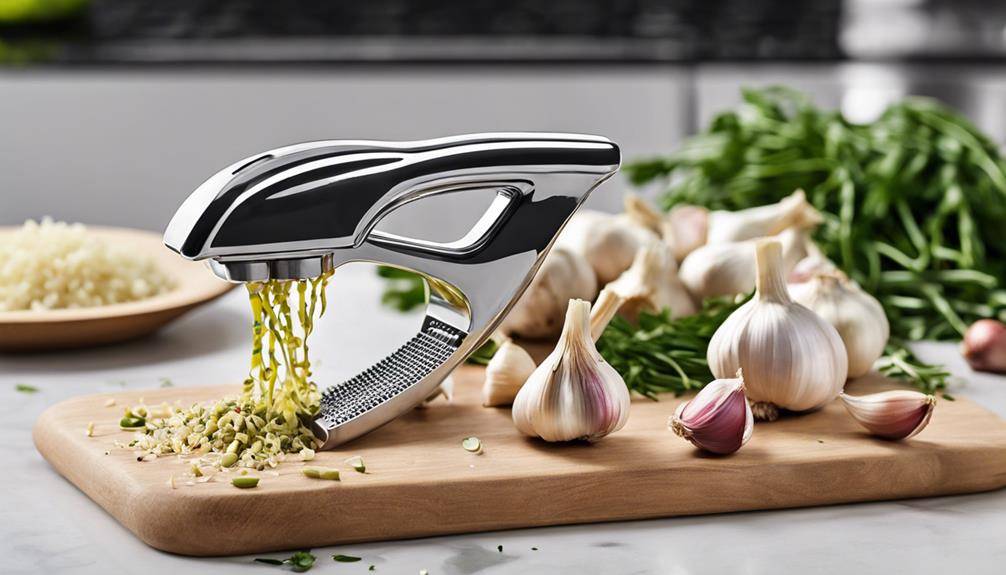Try These Amazing Traditional German Dishes

Try These Amazing Traditional German Dishes; Imagine sitting down to a hearty meal in a cozy German tavern, the aroma of sizzling sausages wafting through the air. As you take your first bite of the bratwurst, the juiciness and smoky flavor instantly transport you to the heart of Germany. But traditional German cuisine offers so much more than just sausages. From tangy sauerkraut to crispy schnitzel, each dish tells a unique story and showcases the rich culinary heritage of this fascinating country. So, whether you’re a food enthusiast or simply curious about the flavors of Germany, join us on a gastronomic journey as we explore the diverse and delicious world of traditional German dishes.
Bratwurst: The Classic German Sausage
Bratwurst, the quintessential German sausage, is a beloved culinary delight that has been enjoyed throughout Germany for centuries. Its history and cultural significance make it an iconic dish in German cuisine. The origins of bratwurst can be traced back to the early 14th century, when it first appeared in the region of Franconia. Since then, it has become a staple in German cuisine, with countless variations and regional recipes.
Bratwurst recipes vary from region to region, each with its own unique twist. In Bavaria, the bratwurst is typically seasoned with a blend of spices that includes marjoram, nutmeg, and white pepper. This gives it a distinct flavor that is loved by locals and tourists alike. In Thuringia, on the other hand, the bratwurst is made with a mixture of pork, beef, and veal, giving it a rich and hearty taste. It is often served with sauerkraut and mustard, creating a perfect balance of flavors.
The cultural significance of bratwurst extends beyond its taste. It has become a symbol of German tradition and is often associated with festivals and celebrations. The most famous of these is Oktoberfest, where millions of bratwursts are consumed each year. It is a time when people come together to enjoy good food, beer, and company.
Sauerkraut: Tangy and Fermented Cabbage
Sauerkraut, a tangy and fermented cabbage dish, is a staple in German cuisine and is known for its unique flavor and health benefits. This traditional German dish is not only delicious but also packed with nutrients that can benefit your overall health. One of the major health benefits of sauerkraut is its probiotic content. Probiotics are beneficial bacteria that promote a healthy gut microbiome. They aid in digestion, boost the immune system, and improve nutrient absorption. By consuming sauerkraut, you can introduce these beneficial bacteria into your system and support your digestive health.
When it comes to sauerkraut, you have the option of either making it at home or buying it from the store. Homemade sauerkraut is often considered the best choice because it allows you to control the fermentation process and ensure the highest quality and freshness. Making sauerkraut at home is a relatively simple process that involves shredding cabbage, adding salt, and allowing it to ferment for a period of time. The result is a tangy and flavorful cabbage dish that can be enjoyed on its own or as a condiment in various dishes.
However, if making sauerkraut at home is not an option for you, store-bought sauerkraut is still a good alternative. It is widely available and convenient to use. When choosing store-bought sauerkraut, opt for options that are refrigerated rather than canned, as they are more likely to contain live probiotics. Additionally, read the label and choose brands that use organic cabbage and minimal additives.
Schnitzel: Crispy and Tender Breaded Meat
When it comes to schnitzel, there are a variety of delicious variations to explore. From classic Wiener schnitzel made with veal, to pork schnitzel and even chicken schnitzel, there is a breaded and crispy option for everyone. Schnitzel is typically served with a side of potato salad, fries, or sauerkraut, providing a satisfying and balanced meal.
Schnitzel Variations
For those looking to explore the world of traditional German cuisine, an irresistible and versatile dish to try is the array of Schnitzel variations, featuring a crispy and tender breaded meat that is sure to satisfy any palate. Schnitzel is a beloved dish in Germany, and each region has its own unique twist on this classic. From the Wiener Schnitzel in Austria to the Jägerschnitzel in Bavaria, regional variations offer a diverse range of flavors and cooking techniques.
The Wiener Schnitzel is made with veal and is traditionally served with lemon wedges, while the Jägerschnitzel is topped with a rich mushroom sauce. Other variations include the Zigeunerschnitzel with a spicy tomato sauce and the Rahmschnitzel with a creamy gravy. Whether you prefer pork, veal, or chicken, there is a Schnitzel variation to suit every taste.
Serving Suggestions
To fully enjoy the crispy and tender breaded meat of Schnitzel, there are various serving suggestions that enhance the flavors and textures of this beloved German dish. Here are three ideas to elevate your Schnitzel experience:
- Pair it with a squeeze of fresh lemon juice: The tartness of the lemon cuts through the richness of the meat, adding a refreshing zing to each bite.
- Serve it with a side of creamy potato salad: The combination of the crispy Schnitzel and the creamy, tangy potato salad creates a perfect balance of textures and flavors.
- Top it with a fried egg: Adding a perfectly cooked sunny-side-up egg on top of your Schnitzel not only adds an extra layer of richness, but also creates a delicious sauce when the yolk mixes with the meat.
Pretzels: A Salty and Chewy Bavarian Treat
Let’s explore the history, ingredients, preparation, and regional variations of pretzels, a beloved Bavarian treat known for its salty and chewy texture. Pretzels have a rich history that dates back to the early Middle Ages, where they were first made by monks. The traditional ingredients used in pretzel making include flour, water, yeast, and salt, giving them their distinctive flavor. The preparation process involves shaping the dough into the iconic pretzel shape before boiling them in a baking soda solution and finally baking them to perfection. While Bavaria is famous for its pretzels, different regions in Germany have their own unique variations, such as the Laugenstangen in Swabia and the Schrippe in Berlin.
History of Pretzels
The history of pretzels traces back to the Bavarian region, where this salty and chewy treat originated. The origins of pretzels can be traced back to the early 6th century, where they were first created by monks in monasteries. These twisted breads were made using simple ingredients such as flour, water, yeast, and salt. Over time, the pretzel evolved and became a popular snack across Germany and other European countries. Here are three interesting facts about the history of pretzels:
- Pretzels were initially associated with religious symbolism, as their twisted shape was believed to represent arms crossed in prayer.
- The pretzel became a symbol of good luck and prosperity, and was often given as a gift on special occasions.
- In the 19th century, pretzels made their way to America with German immigrants, where they gained popularity and became a staple snack in the country.
These historical tidbits highlight the rich and diverse heritage of pretzels, making them more than just a delicious treat.
Ingredients and Preparation
Continuing our exploration of the history of pretzels, let’s now dive into the ingredients and preparation of this beloved Bavarian treat. Traditionally, pretzels are made with a simple dough consisting of flour, water, yeast, and salt. The dough is then shaped into the iconic pretzel form and boiled briefly in a solution of water and baking soda before being baked to perfection.
One pot recipes for pretzels are also common, where the dough is mixed, shaped, boiled, and baked all in one pot. This method simplifies the preparation process and reduces the mess. For those seeking vegetarian alternatives, pretzels can be made without the use of eggs or dairy products. Simply substitute plant-based butter or oil for the traditional butter in the recipe. With their versatile nature, pretzels can be enjoyed by everyone, regardless of dietary preferences.
Regional Variations
Regional variations add a unique twist to the traditional Bavarian pretzel, offering a diverse range of flavors and textures to tantalize your taste buds. Cultural influences play a significant role in shaping these variations, resulting in pretzels that reflect the distinct culinary traditions of different regions in Germany. Here are three examples of regional variations:
- Swabian Pretzel: Known for its distinctive shape, the Swabian pretzel is often larger and flatter than its Bavarian counterpart. It is typically sprinkled with coarse salt and has a soft, chewy texture.
- Franconian Pretzel: In Franconia, pretzels are often made with a combination of rye and wheat flour, giving them a slightly denser texture and a nuttier flavor. They are often enjoyed with mustard or cheese.
- Rheinland Pretzel: The pretzels from the Rhineland region are known for their slight sweetness. They are usually topped with pearl sugar or a sugar glaze, making them a delightful treat.
These regional variations showcase the diversity and creativity within German cuisine, adding an exciting twist to the classic Bavarian pretzel.
Sauerbraten: Slow-cooked and Tangy Pot Roast
For a slow-cooked and tangy pot roast that will transport your taste buds to Germany, look no further than Sauerbraten. Sauerbraten, which translates to “sour roast,” is a traditional German dish that is known for its tender and flavorful meat. The key to achieving the perfect Sauerbraten lies in the cooking techniques and marinade recipes.
To start, Sauerbraten is made by marinating a large piece of beef, typically from the shoulder or rump, for several days in a mixture of vinegar, water, and a variety of spices and aromatics. The marinade is what gives Sauerbraten its distinct tangy flavor. Some popular spices used in the marinade include cloves, peppercorns, bay leaves, and juniper berries. The longer the meat marinates, the more tender and flavorful it becomes.
Once the marinating process is complete, the meat is then slow-cooked in the oven or on the stovetop. This slow-cooking method allows the meat to become incredibly tender and allows the flavors from the marinade to penetrate the meat fully. The cooking time can vary depending on the size of the meat, but it typically takes several hours to achieve the desired tenderness.
There are many variations of Sauerbraten marinade recipes, each with its own unique combination of spices and aromatics. Some recipes may include ingredients like red wine, gingerbread, or even raisins to add complexity to the flavor profile. Regardless of the recipe used, the result is a succulent and tangy pot roast that is sure to satisfy any meat lover.
Spaetzle: Soft and Noodle-like Dumplings
Now let’s talk about the key points of making spaetzle, cooking the dumplings, and serving and garnishing them. Making spaetzle dough involves combining flour, eggs, and salt until a thick batter is formed. The dough is then pushed through a spaetzle maker or a colander into boiling water, where the dumplings cook until they rise to the surface. Once cooked, spaetzle can be served as a side dish or as a main course with various toppings and garnishes, such as cheese, herbs, or sautéed onions.
Making Spaetzle Dough
To make spaetzle dough, you will need a few simple ingredients and a bit of patience. Here are the steps to making this traditional German dish:
- Ingredients:
- All-purpose flour
- Eggs
- Salt
- Process:
- In a large bowl, mix together the flour and salt.
- Create a well in the center of the flour mixture and crack the eggs into it.
- Using a fork, gradually incorporate the flour into the eggs until a sticky dough forms.
- Let the dough rest for about 15 minutes.
- Bring a pot of salted water to a boil.
- Using a spaetzle maker or a colander with large holes, press the dough through into the boiling water.
- Cook the spaetzle for about 2-3 minutes or until they float to the surface.
- Remove the cooked spaetzle from the water and serve with your choice of sauce or toppings.
Making spaetzle dough is a simple process that allows you to explore various cooking techniques, variations, and flavors. Whether you prefer traditional plain spaetzle or want to experiment with adding herbs, cheese, or even vegetables to the dough, the possibilities are endless. The dough can be shaped into different sizes and lengths, giving you the freedom to create the perfect spaetzle to complement your dish. So, grab your ingredients and enjoy the satisfaction of making this delicious German specialty from scratch.
Cooking the Dumplings
After successfully making the spaetzle dough, it’s time to move on to the next step: cooking the dumplings to perfection. Cooking dumplings can vary depending on the type you are making. For soft and noodle-like dumplings like spaetzle, the traditional method involves dropping the dough into boiling water. The dough is typically pressed through a colander or spaetzle maker directly into the pot.
The dumplings cook quickly and are ready in just a few minutes. Once they float to the top, they are done and can be removed with a slotted spoon. It is important not to overcook the dumplings, as they can become mushy. By following these steps, you can ensure that your spaetzle dumplings turn out soft, tender, and delicious.
Serving and Garnishing
To serve and garnish your spaetzle dumplings, consider adding a touch of parsley for a fresh and vibrant taste. When it comes to serving techniques, there are a few traditional methods that can elevate your dish. Here are three ideas to enhance your spaetzle experience:
- Butter and breadcrumbs: After boiling the dumplings, toss them in a pan with melted butter and breadcrumbs. This adds a delightful crunch and richness to the dish.
- Cheese and onions: For a heartier option, sauté some onions in butter until golden brown and sprinkle grated cheese on top of the spaetzle. Place under the broiler until the cheese melts and becomes slightly crispy.
- Gravy: Spaetzle can be served with a rich and flavorful gravy. Choose a gravy that complements the flavors of the dumplings, such as mushroom or beef gravy.
These traditional garnishes will add depth and flavor to your spaetzle dumplings, making them even more satisfying.
Rouladen: Rolled and Stuffed Beef or Pork
You can experience the delicious flavors of traditional German cuisine with Rouladen, a dish consisting of rolled and stuffed beef or pork. Rouladen is a popular dish in Germany, known for its rich flavors and hearty ingredients. There are various variations of rouladen, with each region adding its own twist to the recipe.
The traditional stuffing for rouladen is made with a combination of ingredients that complement the meat perfectly. One common stuffing recipe includes a mixture of onions, pickles, mustard, and bacon. This combination adds a tangy and savory flavor to the dish. Some variations also include ingredients like mushrooms, carrots, or herbs to enhance the taste.
When it comes to the choice of meat, beef is the most commonly used for rouladen. Thinly sliced beef is rolled around the stuffing, creating a delicious and tender dish. However, pork is also sometimes used as an alternative. The meat is typically seasoned with salt, pepper, and other spices before being cooked.
Rouladen is typically seared in a hot pan and then simmered in a rich gravy. The gravy is made by deglazing the pan with red wine or beef broth, and then adding onions, carrots, and other vegetables. The rouladen is then cooked in the gravy until the meat is tender and the flavors have melded together.
The end result is a mouthwatering dish that is full of flavor and texture. The combination of the tender meat, savory stuffing, and rich gravy creates a dish that is both satisfying and comforting. Whether you choose beef or pork, rouladen is a classic German dish that is sure to delight your taste buds.
Kartoffelsalat: Creamy and Tangy Potato Salad
Creamy and tangy, Kartoffelsalat is a classic German potato salad that is loved for its rich flavors and comforting textures. This beloved dish has a long history and has become a staple in German cuisine. Here are a few interesting facts about Kartoffelsalat:
- Serving Variations: Kartoffelsalat can be served warm or cold, providing different experiences for the taste buds. Warm Kartoffelsalat is often enjoyed as a side dish with sausages or roasted meats. The potatoes are tossed in a warm dressing made with vinegar, broth, and bacon, resulting in a hearty and flavorful salad. On the other hand, cold Kartoffelsalat is a popular choice for picnics and summer gatherings. It is typically dressed with mayonnaise, mustard, vinegar, and various herbs, enhancing the creamy and tangy flavors.
- Potato Salad History: Potato salad has been a part of German cuisine for centuries. The dish originated in the southern regions of Germany, where potatoes were commonly grown. The earliest versions of Kartoffelsalat were simple, consisting of boiled potatoes tossed in vinegar or oil. Over time, new ingredients such as onions, bacon, and herbs were added to enhance the flavors. Today, there are countless variations of Kartoffelsalat, each showcasing the unique culinary traditions of different German regions.
- Regional Varieties: Each region in Germany has its own twist on Kartoffelsalat. In the northern parts, the salad often includes mayonnaise or cream, giving it a rich and creamy texture. In the south, Kartoffelsalat tends to be lighter, with a tangy dressing made from vinegar, mustard, and oil. Some regions even add pickles, apples, or cucumbers to add a refreshing crunch to the dish. The diversity of Kartoffelsalat recipes showcases the versatility of this beloved German potato salad.
Black Forest Cake: Rich and Chocolatey Delight
Now let’s talk about the history and variations of Black Forest Cake. This rich and chocolatey delight has a fascinating background that dates back to the 16th century. Originally known as Schwarzwälder Kirschtorte, this traditional German dessert is made with layers of chocolate cake, cherries, and whipped cream, all topped with chocolate shavings. Different regions in Germany have their own variations, with some adding liqueur or using different types of cherries.
History of Black Forest Cake
The origin and evolution of Black Forest Cake, a rich and chocolatey delight, can be traced back to the beautiful region of Black Forest in Germany. This cake holds a significant place in the history of chocolatey desserts and traditional cake recipes. Here are three interesting facts about the history of Black Forest Cake:
- The cake’s name comes from the Black Forest region, known for its dense forests and picturesque landscapes.
- It is believed that the cake was first created in the early 20th century, with its recipe being inspired by the local ingredients found in the Black Forest region.
- Black Forest Cake gained popularity internationally after it won a gold medal at a pastry competition in 1934.
These historical facts highlight how Black Forest Cake has become a beloved dessert, cherished for its indulgent chocolate flavor and the skillful craftsmanship involved in its creation.
Traditional Recipe Variations
Traditional variations of the Black Forest Cake offer unique twists on the rich and chocolatey delight, showcasing the creativity and diversity of German culinary traditions. While the classic recipe consists of layers of chocolate cake, whipped cream, and cherries, regional recipe variations add their own cultural significance to this beloved dessert. In the Baden-Württemberg region, for example, the cake is often made with Kirschwasser, a cherry schnapps, which adds a boozy and fruity flavor to the dessert. In the Black Forest region itself, some variations include additional layers of cherries or chocolate mousse. These regional recipe variations not only add depth and complexity to the cake but also reflect the unique flavors and traditions of each area in Germany.
Lebkuchen: Spiced and Gingerbread-like Cookies
With their warm spices and rich flavors, Lebkuchen cookies are a beloved treat in German cuisine. These spiced and gingerbread-like cookies have a long history and are particularly popular during the holiday season. Here are some discussion ideas to explore the world of Lebkuchen recipes and holiday traditions:
- Lebkuchen Recipes: Lebkuchen cookies are made with a combination of ground nuts, honey or molasses, spices, and citrus zest. The dough is typically left to rest for a period of time to allow the flavors to meld together. Different regions in Germany have their own variations of Lebkuchen recipes, with some adding candied fruits or nuts to the dough. The cookies are often baked until they have a slightly crunchy exterior and a soft, chewy center. Some recipes even call for a glaze or icing to be drizzled on top for added sweetness.
- Lebkuchen Holiday Traditions: Lebkuchen cookies are deeply ingrained in German holiday traditions. They are often a staple at Christmas markets, where vendors sell an array of Lebkuchen in different shapes and sizes. These cookies are also commonly given as gifts during the holiday season. In some families, it is a tradition to bake Lebkuchen together, with each member contributing to the process. This activity brings loved ones together and creates cherished memories. Additionally, Lebkuchen hearts, which are heart-shaped cookies with sweet messages written on them, are often exchanged as tokens of affection.
- Variations and Innovations: While traditional Lebkuchen recipes remain popular, there have been some interesting variations and innovations in recent years. Some bakers are experimenting with different spices and flavors, such as adding cardamom or nutmeg to the dough. Others are incorporating modern twists, like dipping the cookies in chocolate or creating sandwich cookies with a Lebkuchen filling. These creative adaptations add new dimensions to the classic Lebkuchen cookies, appealing to both traditionalists and those looking for something different.
Lebkuchen cookies continue to be a cherished part of German cuisine, especially during the holiday season. Whether you stick to the traditional recipes or try out new variations, these spiced treats are sure to bring warmth and joy to any gathering.
Käsespätzle: Cheesy and Comforting Noodle Dish
For a comforting and indulgent dish, look no further than Käsespätzle, a cheesy noodle dish that is sure to satisfy your cravings. Käsespätzle, which translates to “cheese noodles,” is a traditional German dish that originated in the region of Swabia. It is made with spätzle, a type of soft egg noodle, and a generous amount of melted cheese, usually Emmental or Gruyere. The dish is typically baked in the oven until the cheese is golden and bubbly, creating a deliciously gooey and satisfying meal.
While the basic recipe for Käsespätzle remains the same, there are several variations that you can try to add your own twist to this classic dish. Some people like to add caramelized onions or crispy bacon bits for extra flavor and texture. Others prefer to mix different types of cheese, such as cheddar or mozzarella, to create a unique taste profile. You can also experiment with herbs and spices like nutmeg, thyme, or paprika to enhance the flavors even further.
When it comes to serving Käsespätzle, the possibilities are endless. Traditionally, it is served as a main course, accompanied by a side salad or sauerkraut. However, you can also serve it as a side dish alongside roasted meats or sausages. For a creative twist, you can even turn Käsespätzle into a party appetizer by cutting it into bite-sized squares and serving it on toothpicks.
Weisswurst: Traditional Bavarian White Sausage
Continuing our exploration of traditional German dishes, let’s now turn our attention to Weisswurst, a beloved Bavarian white sausage. Weisswurst is a traditional Bavarian specialty that is typically made from minced veal and pork back fat. This delicious sausage is seasoned with parsley, mace, lemon zest, and other spices, giving it a unique and flavorful taste.
When it comes to Weisswurst, there are a few regional variations to be aware of. In Munich, the birthplace of this sausage, it is traditionally served with a side of sweet mustard, freshly baked pretzels, and a refreshing wheat beer. This combination is considered a classic Bavarian breakfast or brunch. In other regions of Bavaria, Weisswurst is often enjoyed alongside sauerkraut, potato salad, or horseradish sauce.
Here are three reasons why Weisswurst has become such a beloved Bavarian dish:
- Tender and Juicy: The combination of veal and pork back fat creates a sausage that is incredibly tender and juicy. The delicate flavors are complemented by the light seasoning, making each bite a delight.
- Cultural Significance: Weisswurst is deeply rooted in Bavarian culture and is often associated with traditional festivals and events. It is a symbol of Bavarian pride and heritage.
- Ritual of Eating: There is a specific way to eat Weisswurst. The sausage should be removed from its casing and enjoyed with a knife and fork. The skin is not meant to be eaten, and it is considered bad luck to consume Weisswurst after the clock strikes noon.
Rotkohl: Sweet and Sour Red Cabbage
Rotkohl, also known as sweet and sour red cabbage, is a popular side dish in German cuisine. This delightful dish is made by cooking red cabbage with a combination of sweet and sour flavors, resulting in a tangy and slightly sweet taste. Rotkohl is often served alongside hearty German dishes such as sausages and pork, and it adds a vibrant burst of color to the plate.
There are various variations of rotkohl across different regions in Germany. In some recipes, apples or apple cider vinegar are added to enhance the sweetness and acidity. On the other hand, some versions use red wine or red wine vinegar for a deeper flavor. Additionally, spices like cloves, juniper berries, and cinnamon can be added to add complexity to the dish.
Not only is rotkohl delicious, but it also offers several health benefits. Red cabbage is rich in vitamins C and K, which are essential for a healthy immune system and bone health. It is also packed with antioxidants that help fight inflammation and protect against chronic diseases. Furthermore, the fiber content in red cabbage can promote digestion and support a healthy gut.
Maultaschen: German-Style Dumplings Filled With Meat and Herbs
Maultaschen, a beloved traditional German dish, are dumplings filled with a savory mixture of meat and herbs. These delicious dumplings have been enjoyed in Germany for centuries and are a popular comfort food. Maultaschen are often considered a regional specialty of the Swabian region in southwestern Germany, where they are said to have originated.
Here are three variations of Maultaschen that you can try:
- Classic Maultaschen: These are made with a filling of ground meat, such as pork or beef, mixed with bread crumbs, eggs, onions, and a blend of herbs and spices. The filling is then wrapped in a thin pasta dough and boiled until cooked. Traditional accompaniments for classic Maultaschen include a rich beef or vegetable broth and a side of potato salad.
- Spinach and Cheese Maultaschen: This vegetarian version of Maultaschen features a filling of spinach, ricotta cheese, onions, and garlic. The dumplings are cooked in the same way as the classic version and are often served with a creamy mushroom sauce or melted butter with fresh herbs.
- Smoked Maultaschen: For a smoky twist, smoked Maultaschen are filled with smoked meat, such as bacon or ham, along with the usual mixture of herbs and spices. These dumplings can be served with a tangy mustard sauce or sautéed onions and mushrooms.
Maultaschen can be enjoyed as a main course or as a side dish. They are versatile and can be prepared in various ways to suit different tastes and preferences. So, why not give them a try and experience the delicious flavors of this traditional German dish?
Rote Grütze: Sweet and Tart Berry Compote
Sweet and tart berry compote, known as Rote Grütze, is a classic German dessert that showcases the vibrant flavors of summer fruits. This delicious dessert not only satisfies your sweet tooth but also offers several health benefits.
Rote Grütze is packed with antioxidants from the variety of berries used in its preparation. These antioxidants help to fight against free radicals in the body, reducing the risk of chronic diseases like cancer and heart disease. Additionally, the berries are a great source of vitamins and minerals, including vitamin C and potassium, which support a healthy immune system and promote good heart health.
There are also popular variations of Rote Grütze that cater to different taste preferences. One common variation is the addition of vanilla sauce or custard, which adds a creamy and indulgent element to the dish. Another variation includes the use of different types of berries such as raspberries, blackberries, and strawberries, creating a medley of flavors and colors.
To make Rote Grütze, a combination of fresh or frozen berries, sugar, and a thickening agent like cornstarch or tapioca starch is used. The mixture is then cooked until the berries soften and release their juices, resulting in a thick and luscious compote. This versatile dessert can be enjoyed on its own, served over vanilla ice cream or yogurt, or even used as a filling for cakes and tarts.
Frequently Asked Questions: Try These Amazing Traditional German Dishes
What Are the Main Ingredients in Bratwurst?
Bratwurst is typically made with ground pork, beef, veal, or a combination of these meats. It is seasoned with spices like salt, pepper, nutmeg, and marjoram. Bratwurst is commonly served grilled or pan-fried and enjoyed with sauerkraut, mustard, and a side of German potato salad.
How Is Sauerkraut Traditionally Fermented?
To ferment sauerkraut traditionally, you start by shredding cabbage and adding salt. Then, you let it sit for a few days, allowing the natural bacteria to convert sugars into lactic acid. This process creates sauerkraut’s tangy flavor and preserves its nutrients. The fermentation process also enhances sauerkraut’s probiotic properties, which can support gut health.
What Type of Meat Is Typically Used for Schnitzel?
When it comes to schnitzel, the type of meat typically used is pork or veal. Some popular variations include Wiener Schnitzel, Jägerschnitzel, and Zigeunerschnitzel. Common side dishes served with schnitzel include potato salad, sauerkraut, and spaetzle.
Can Pretzels Be Found Outside of Bavaria?
Yes, pretzels can be found outside of Bavaria. They have become popular variations around the world. In addition to pretzels, there are other traditional German dishes that are also popular outside of Bavaria.
How Long Does It Take to Cook Sauerbraten?
To cook sauerbraten, you marinate the meat for a few days, then braise it in a mixture of spices, vinegar, and broth. It takes about 3-4 hours to cook. Best served with potato dumplings or spaetzle.
Conclusion
In conclusion, traditional German dishes offer a delightful blend of flavors and textures that are sure to satisfy any palate. From the classic bratwurst and sauerkraut combination to the crispy schnitzel and chewy pretzels, these dishes showcase the richness and variety of German cuisine. Whether you prefer tangy and fermented flavors like sauerbraten and rotkohl, or the comforting taste of maultaschen and rote grütze, there is something for everyone to enjoy in traditional German cooking. Explore these dishes and discover the deliciousness of German cuisine for yourself.








